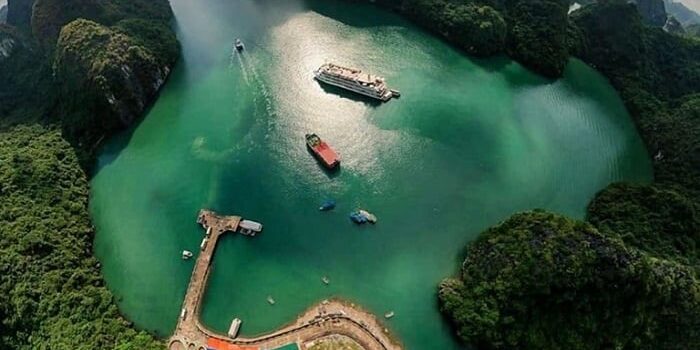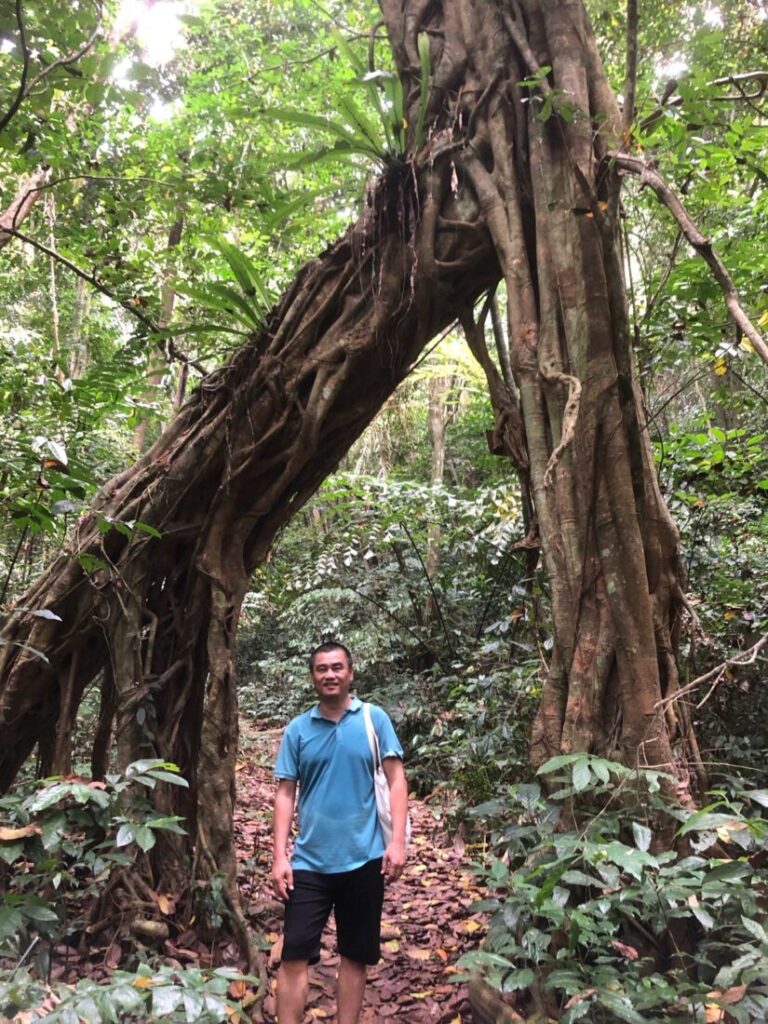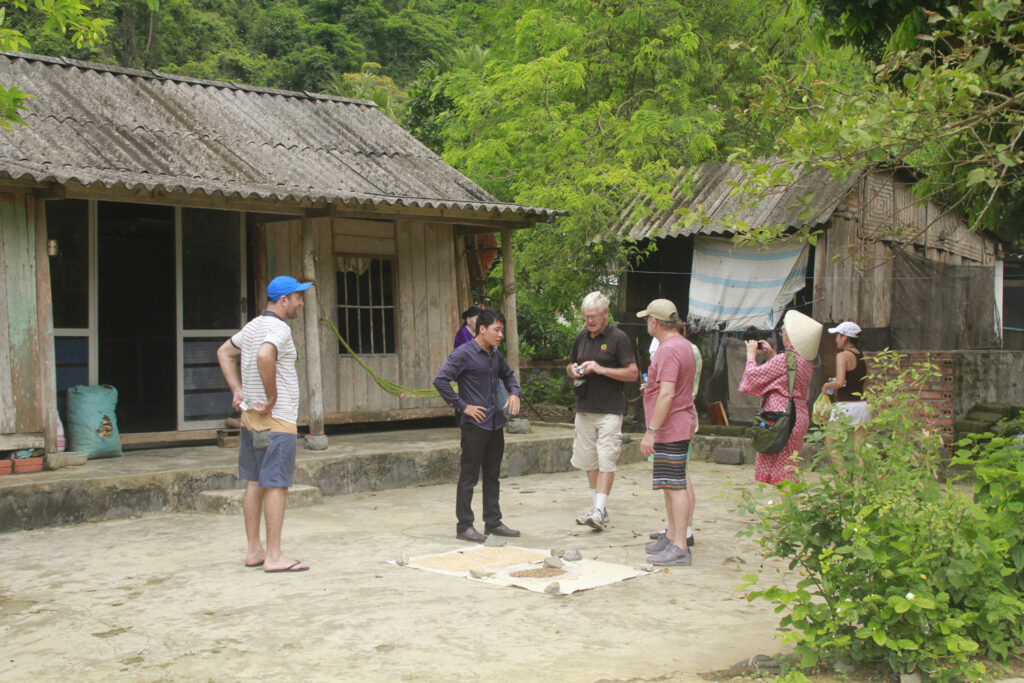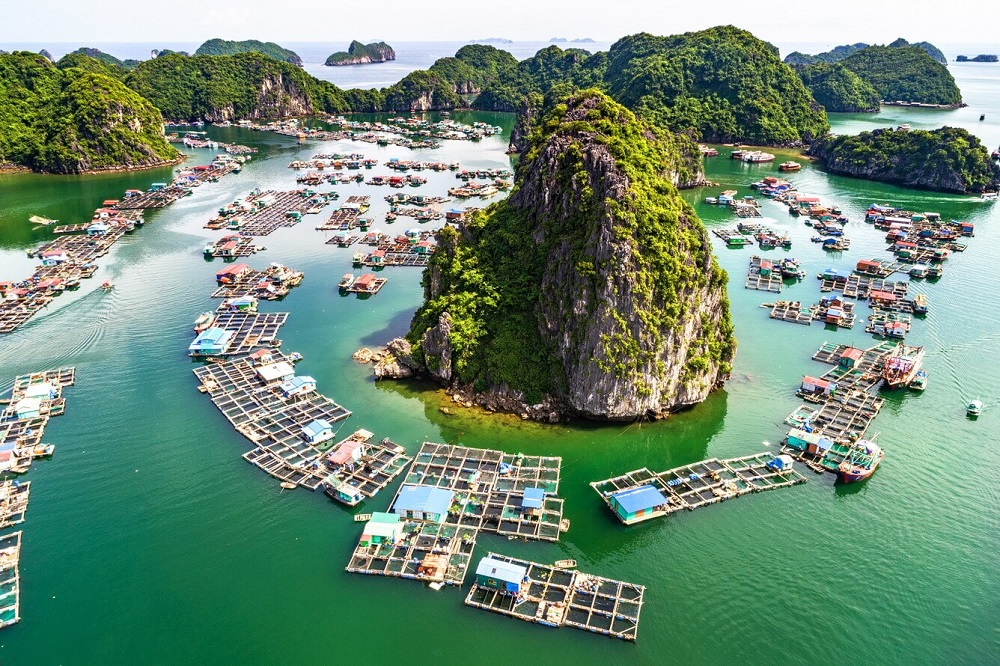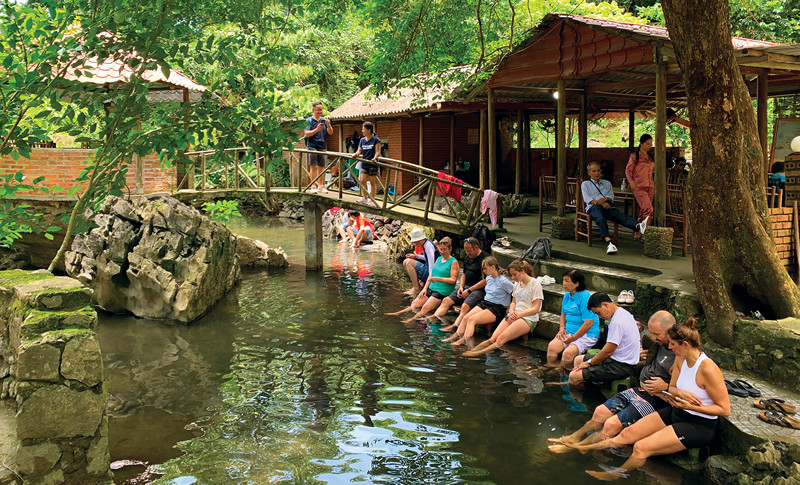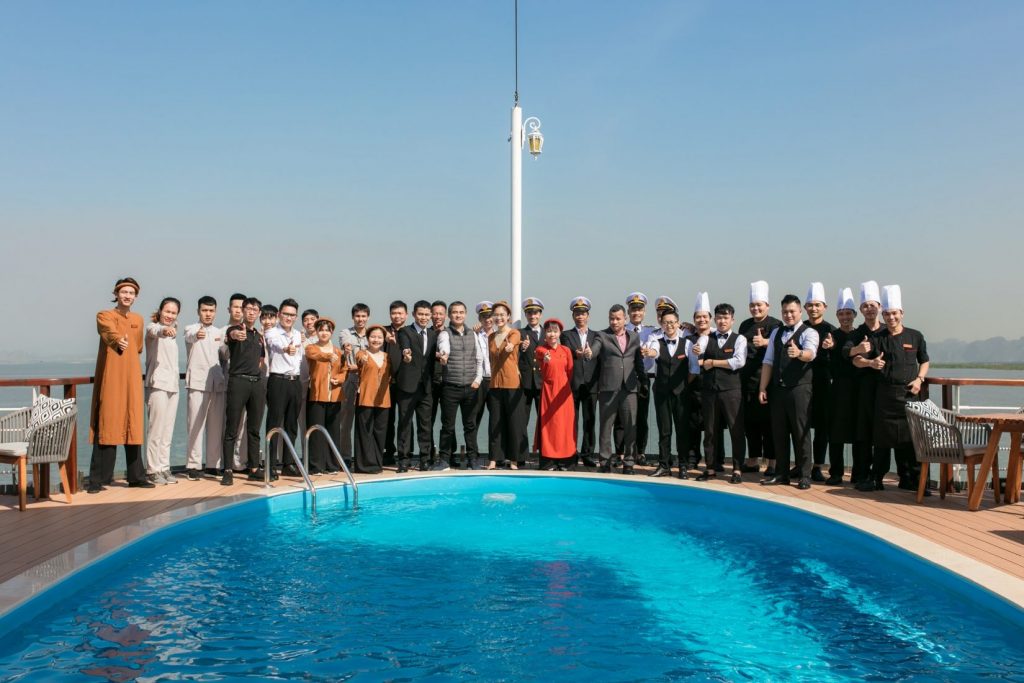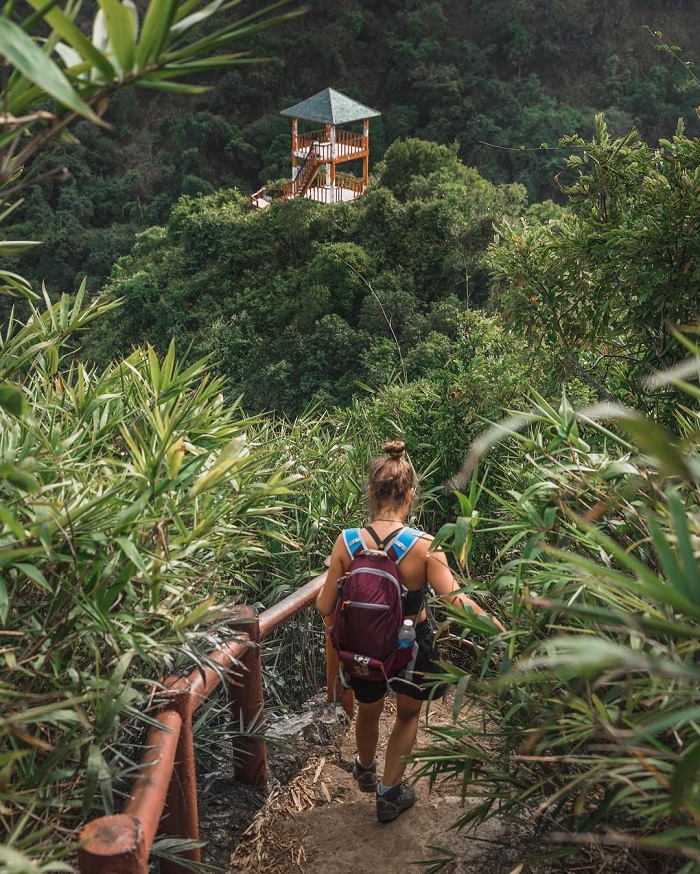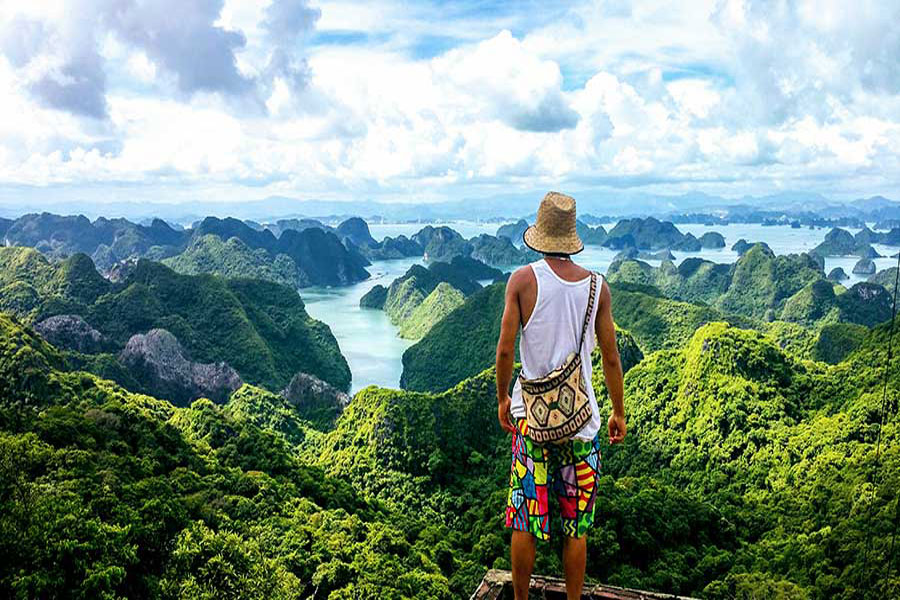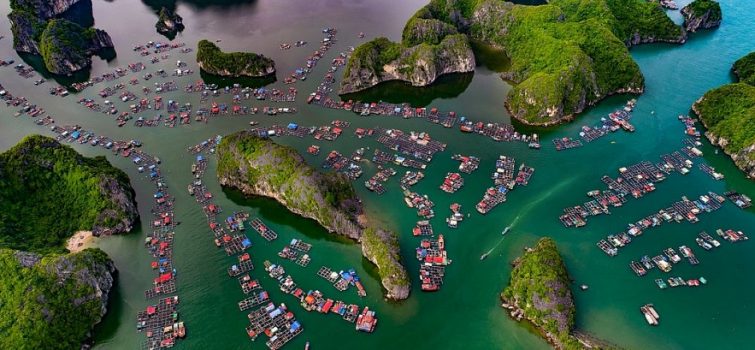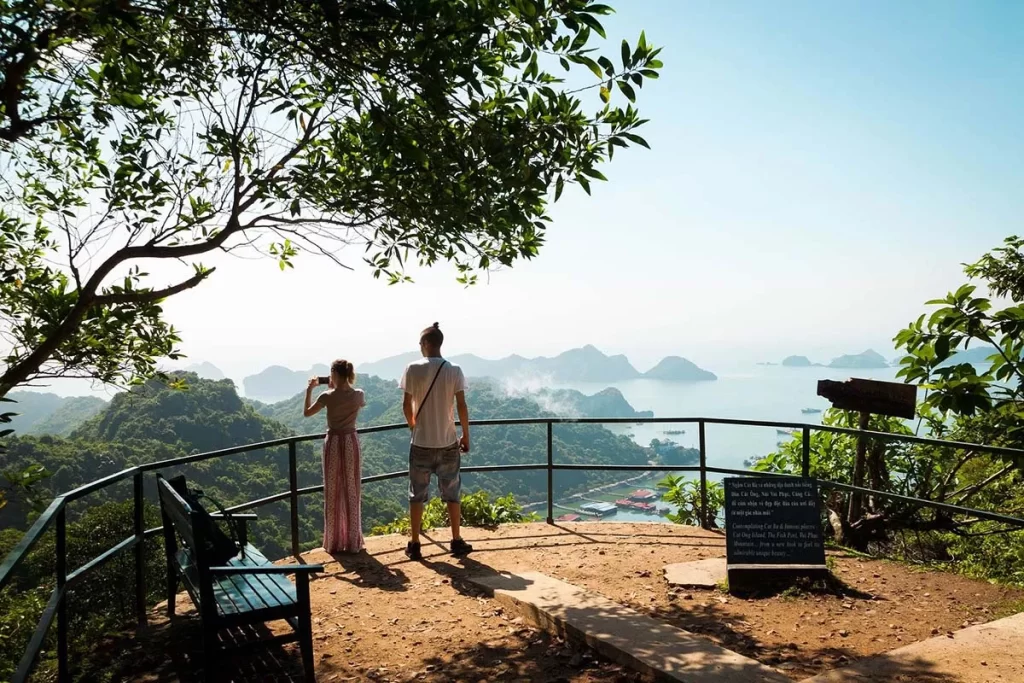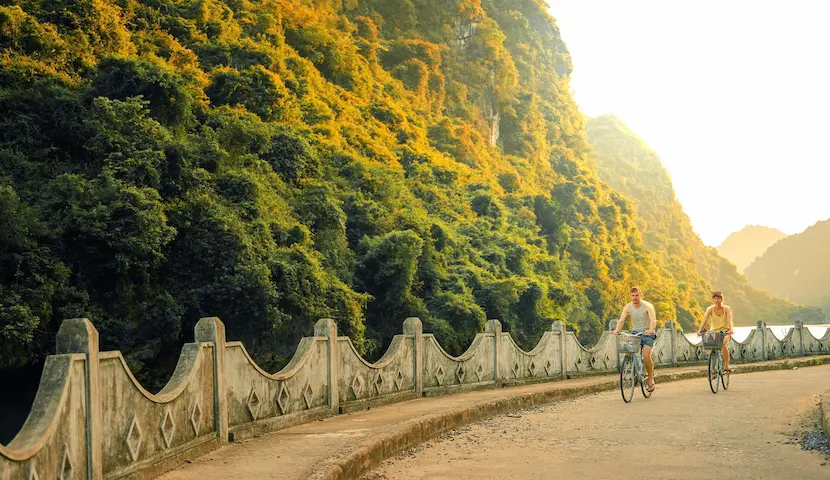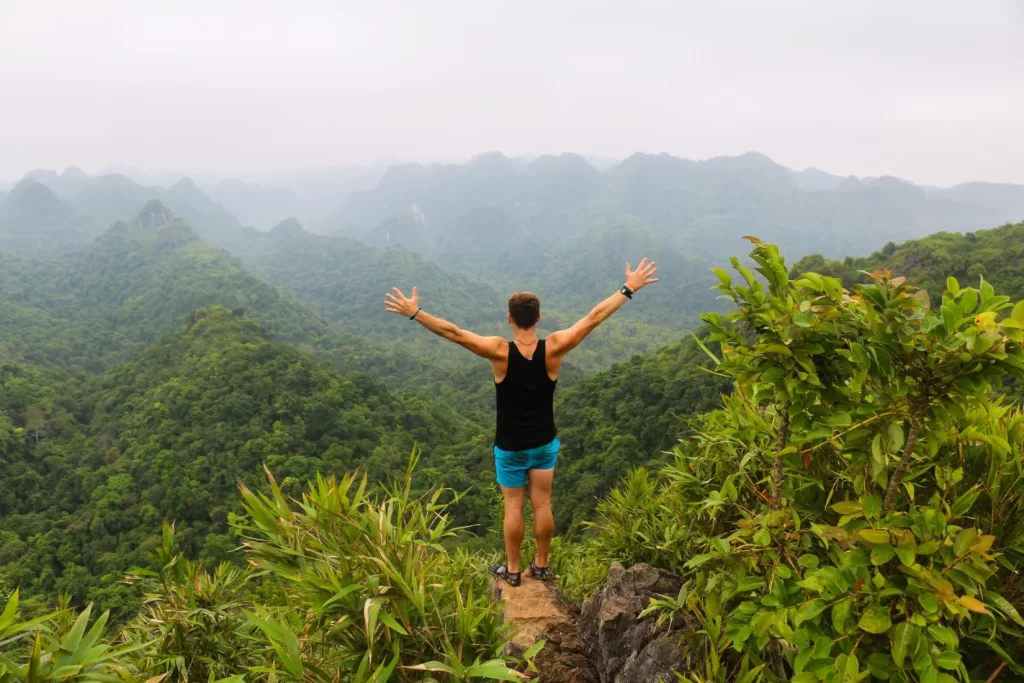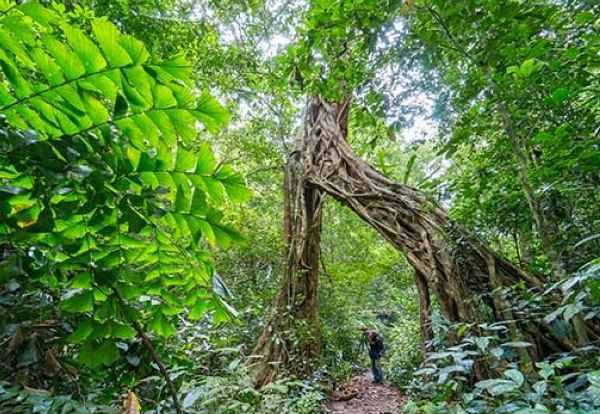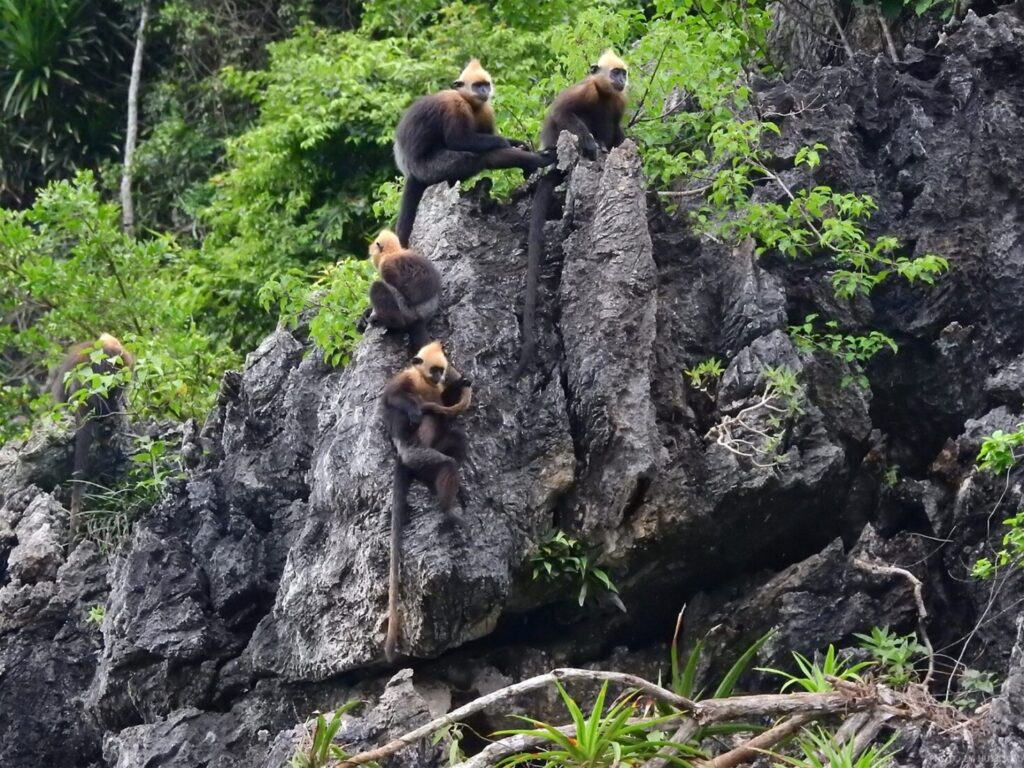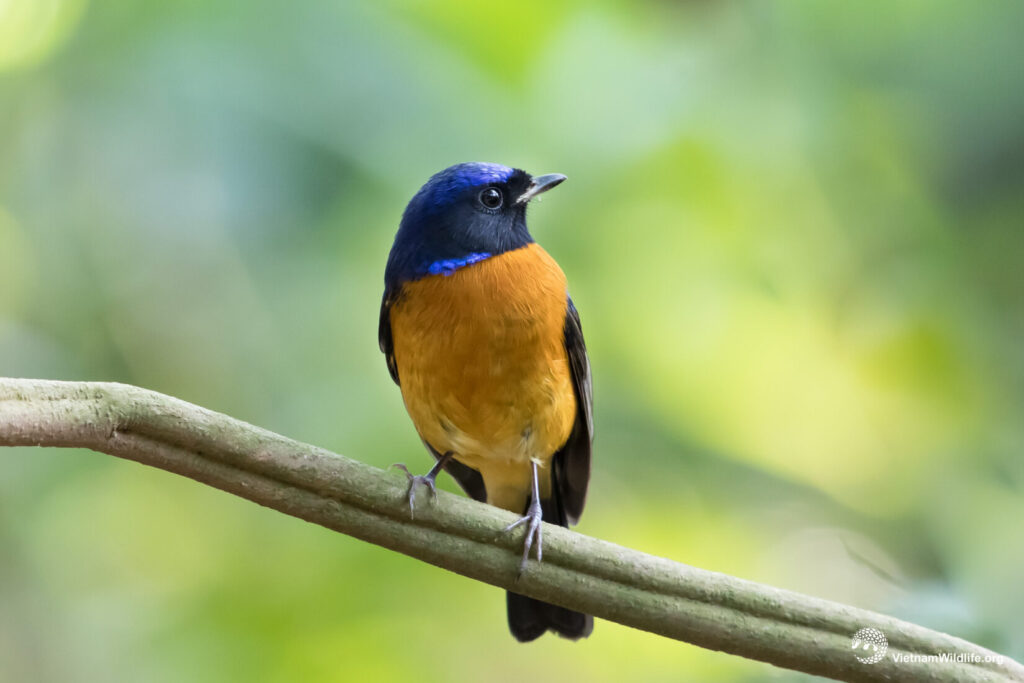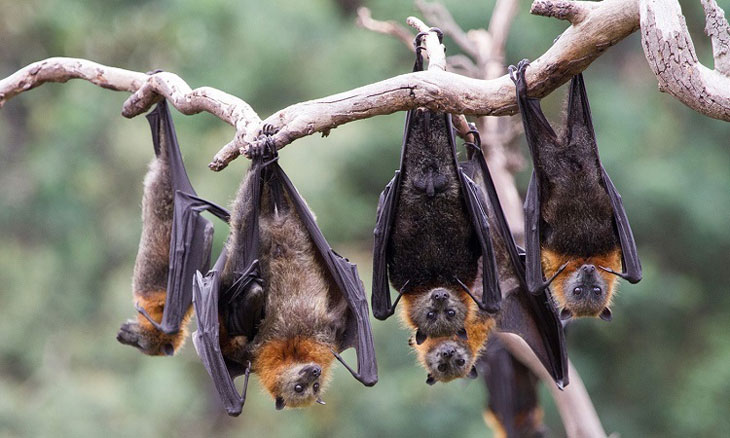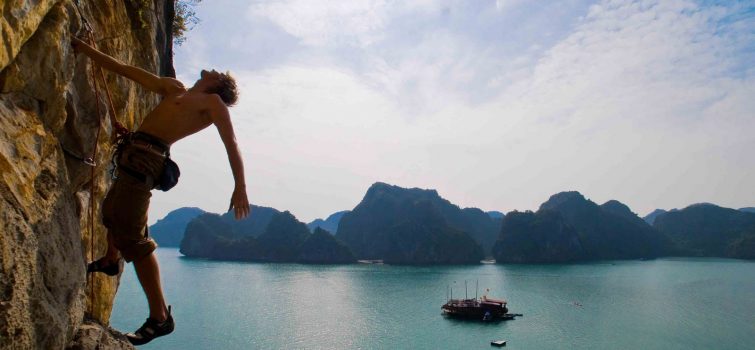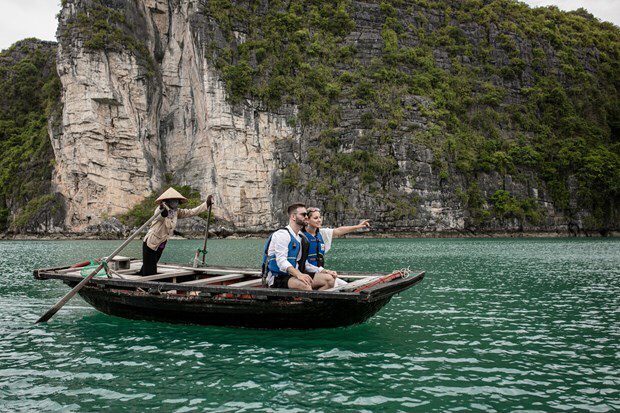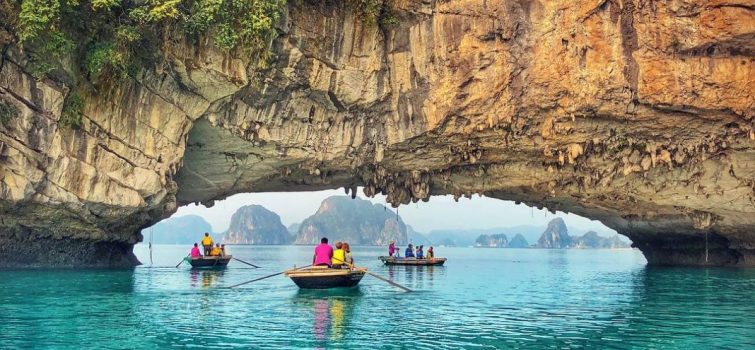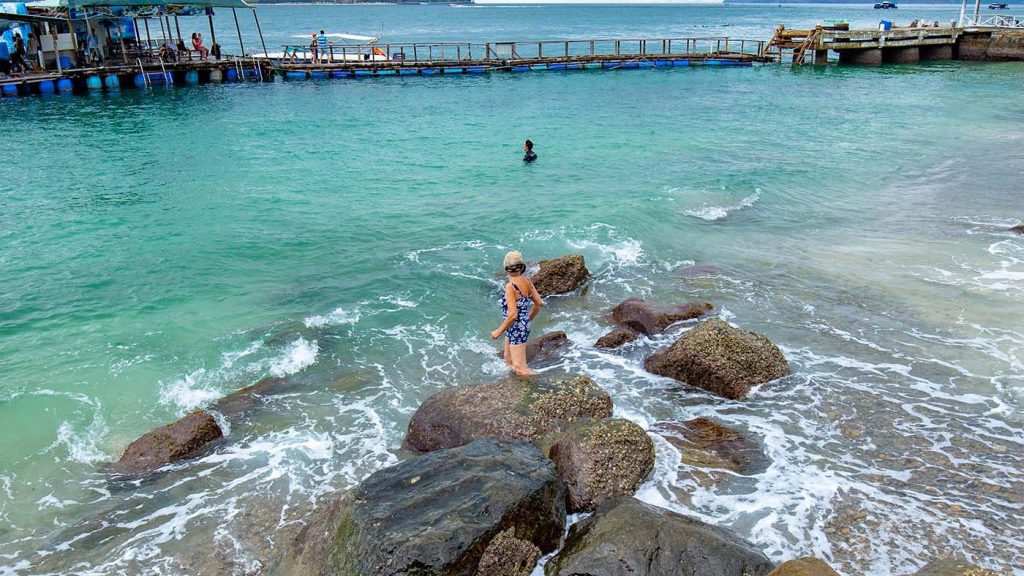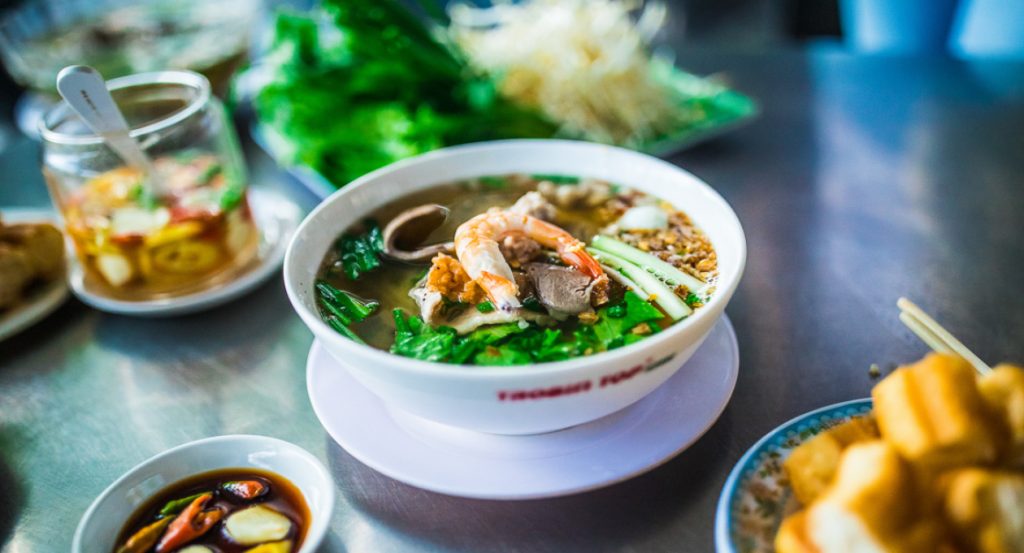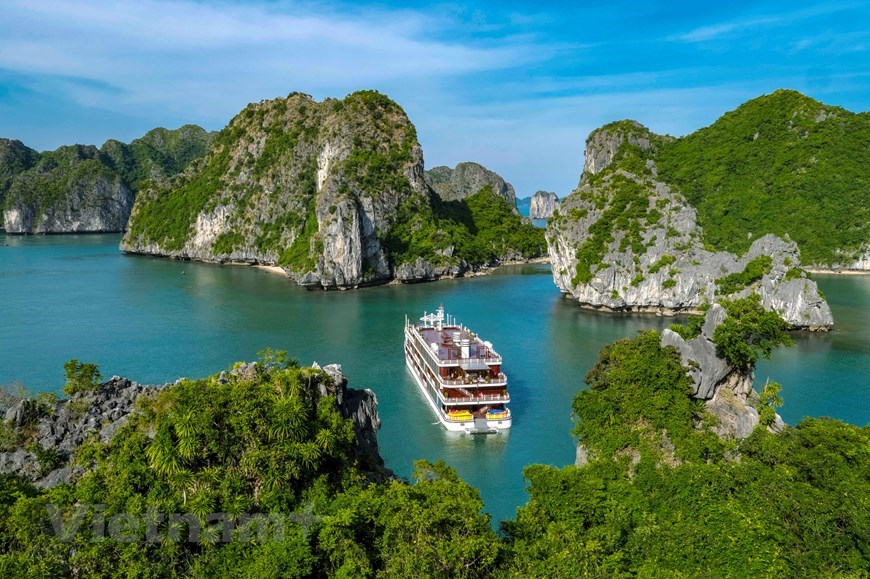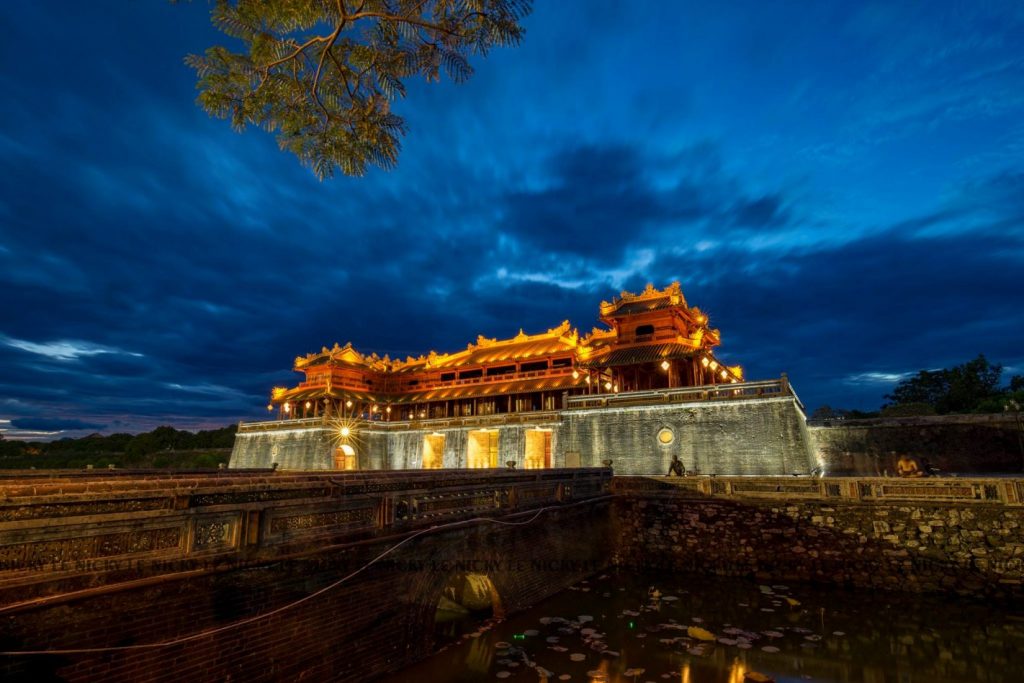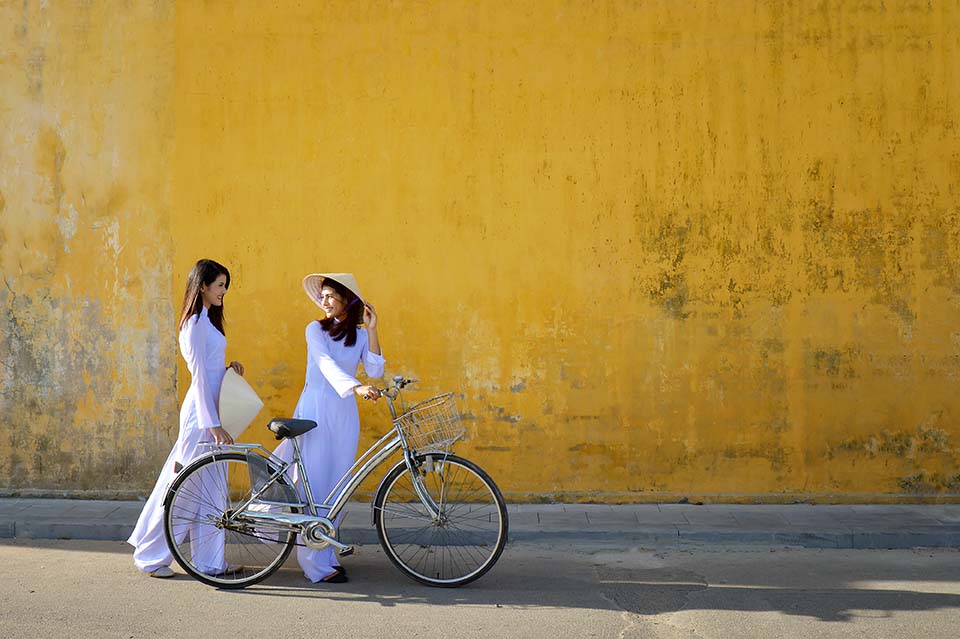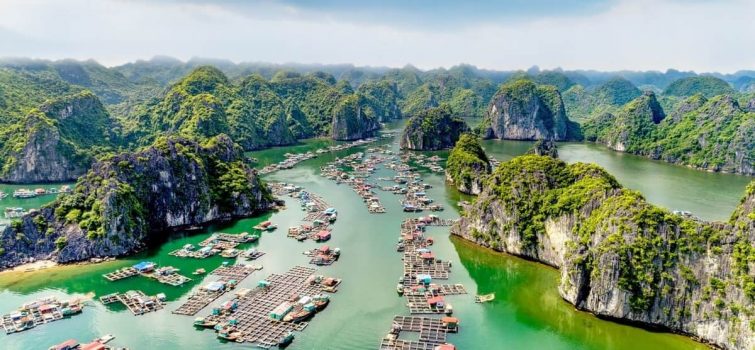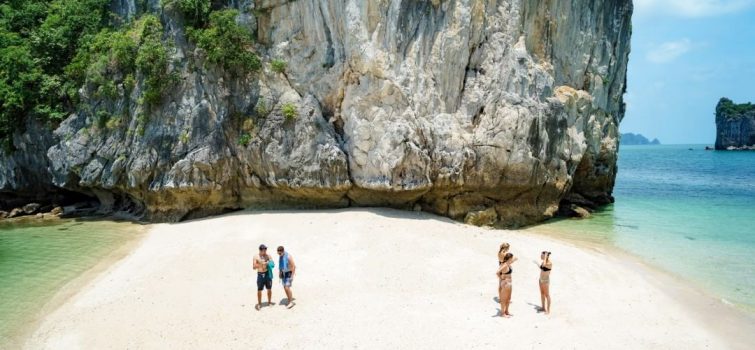Lan Ha Bay or Halong Bay? Which one do you choose? In the northwest region of Vietnam, there is an increase in a new destination – Lan Ha Bay appealing lots of visitors. It can be seen that Lan Ha Bay makes tourists feel exactly like globally acclaimed Halong Bay yet without a large number of visitors who have blemished the experiences of its magnificent sceneries. Halong Bay, undeniably, is always lied on the list of every Vietnam’s travel itinerary because of its natural beauty. On the other hand, there is no denying that Lan Ha Bay is highly recommended to be a “must-visit attraction” by many visitors as well as travel bloggers. Probably, you find it hard to decide which place you’ll go on a holiday.
In this article, Heritage Cruises will help you to list out all of the necessary information of Lan Ha Bay and Halong Bay regarding geographical features, how to get to the destination and some differences between the two as well so that you can decide by your own, which one is better.
-
Geographical features
It can be true that Lan Ha Bay belongs to the same area with Halong Bay so both of them share similar geographical features and the climate condition. Despite some similarities, there are absolutely different topographies.
* Halong Bay
Situated in the northeast region of Vietnam, Quang Ninh Province, Halong Bay is a part of the Gulf of Tonkin. It covers a total area of around 1,553 km2, with 1,969 islands of varied sizes and shapes, including 989 of which have been given names. There are two main kinds of islands which possess different types of topography: limestones and schists. The average age of topography on this island is between 250 and 280 million years old.
The dense concentration of limestone islands, caves and grottos, magnificent sceneries creates the central area of Halong Bay, one of the World Heritage Sites recognized by UNESCO. The area of 434 km2 including 775 beautiful islands is put under protection.
* Lan Ha Bay
Lan Ha Bay is situated in the east of Cat Ba Island (Hai Phong Province), the south of Halong Bay and has around 400 karst limestones island surrounded by evergreen charm and vegetation. By going around this bay, you’ll a have chance to contemplate many islets with small and untouched beaches. Lan Ha Bay is the home of lots of mountains with different names depending on the imagination of tourists, for example, Hon Quoc Islet (Wooden Shoe islet), Dao Khi – Monkey Island and etc. Lan Ha Bay possesses about 139 beautiful sandy beaches and spreads over 7,000 ha including that the area of 5,400 ha is under-managed by The Biosphere Reserve recognized by UNESCO – Cat Ba National Park.
Geographically and aesthetically, there is no difference between Halong Bay and Lan Ha Bay. Both of them possess thousands of limestone karsts, magnificent islands, plenty of beaches and spectacular landscapes and seascapes. It can be true that Halong Bay has a high level of the density of the islands compared to Lan Ha Bay in which the islands are scattered along the bay. On one hand, Halong Bay is recognized as one of the New Seven Wonders in the world; therefore, it has been opening the gate for tourist visitations and tourism development from the very first time. On the other hand, Lan Ha Bay still keeps its pristine beauty, even unique and attractive ones. Thereby, tourists truly enjoy the beautiful sceneries and immerse themselves in Lan Ha Bay.
2. How to get there
2.1 How to get to Halong Bay
- From Hanoi: around 174 km from Hanoi City. Due to the new highway, taking 2h50 mins. There are several options below helping tourists to travel from Hanoi to Halong Bay.
- By road: Coach from My Dinh Station or Gia Lam Station (Hanoi) to Bai Chay Station (Halong City). Ticket fee: VND 100,000 to VND 250,000/person/one way. From Bai Chay Station, you can take a taxi to get Halong Bay, 40 mins.
- The shuttle bus is offered by Hanoi local tour operator. Tourists can be picked up and dropped off tourists around the Old Quarter area. Then it transfers the guest to arrive in Halong Bay. Ticket fee: USD 10 – 20/person/ 1 way. It can be included if you book a Halong Bay tour or an overnight cruise.
- Going by a private car takes 1.5 hours. It’s more convenient and suitable for a family with kids.
- By air: You’ll take a seaplane at Noi Bai International Airport, from Hanoi to Tuan Chau Port (Halong City), only 45 mins. Besides, you’ll have 15 mins to look over Halong Bay from the seaplane. Hai Au Aviation is the only seaplane service-provider in Vietnam up to now. The price is about VND 9,300,000/adult/1 way.
- From other places like Ho Chi Minh City, Danang City or Buon Ma Thuot, etc. You can take an airplane directly to Van Don International Airport (Quang Ninh Province).
2.2 How to get to Lan Ha Bay
- From Hanoi: around 134 km from Hanoi City, nearly 2 hours due to the new highway. Common route: Hanoi – Haiphong City (by road) – Cat Ba Island (by speedboat or ferry or cruise) – Lan Ha Bay. Unlike Halong Bay, you can visit right away in Halong City; however, to go to Lan Ha Bay, you have to access to Cat Ba Island by speedboat or ferry. Then you can continue Lan Ha Bay trip. Like Halong Bay, there are also some options to get Lan Ha Bay for the guests to choose:
– By road:
- By sharing tourist bus/a shuttle bus to Dinh Vu Port offered by some companies such as Good morning Cat Ba (VND 340,000/person/1 way). Cat Ba Express (VND 590,000/person/ roundtrip including bus + speedboat); Hoang Long (VND 225,000/person/1 way), Inter Bus Lines (VND 150,000/person/1 way). It can pick up tourists at hotels in the Old Quarter and drops off at hotels in Cat Ba Island. Then get on a speedboat to Cai Vieng Port on Cat Ba Island from Dinh Vu Port, 30 mins. This way costs 3.5 hours.
- By private van: taking around 2h. This is highly recommended for a big group of travelers or a family with children. When you reach Got Harbour, following the rest of the route by speedboat to get to Cai Vieng Port on Cat Ba Island. If you rent a private van, it will take VND 2,600,000/one way.
– By air: You can get Cat Ba Island from Cat Ba International Airport. The route is that Cat Bi Airport (Haiphong) – Binh Harbour (by road, 35 mins) – Cai Vieng Pier on Cat Ba Island (by speedboat, 10 mins) – Cat Ba Town (by bus, 40 mins) – Lan Ha Bay.
– By cruise: Hai Phong city – Got Harbour (by road, 45 mins). From Got Harbour, Heritage Cruises offer distinctive tour itineraries to discover Cat Ba Island and Lan Ha Bay.
- From other places: Tourists can take a plane to Cat Bi International Airport. Then, you look through common routes mentioned above on how to get to Lan Ha Bay.
Generally, there are several ways to reach Halong Bay as well as Lan Ha Bay. Those ways are quite convenient and easier to find.
3. Differences
3.1 Must-visit attractions
There is no denying that for quantity, at least Lan Ha Bay matches with Halong Bay regarding the top destinations and unmissable features of each itinerary visiting the gulf. The quality, however, modifies significantly.
- Halong Bay
Titop Island, Soi Sim Beach, Tuan Chau Beach, and Bai Chay Beach are considered as one of the most attractive beaches in Halong Bay. Titop Island has a beach which is the most accessible for guests, so this place can get serious congestion in the peak season. Besides, Soi Sim Beach can offer a panoramic view from the top but it’s in the development process. The beach remains its mystery, probably due mostly to the very recent development and the appearance of the appealing of thatched-roof umbrellas that create plentiful shapes.
Sung Sot Cave is the masterpiece of uniqueness and natural beauty for its large cavernous areas featured by stalactites and stalagmites. Thien Cung and Trinh Nu are also known for their magnificent beauty. For history, Dau Go (Cave of the Wooden Stakes) brings itself lots of historical proofs, which serves as a vital place to store the wood that would finish preventing Mongol invasion in the 13th century.
Cua Van Fishing Village still remains its ancient, grace, and retain a distinctive traditional culture. In 2012, It has been listed on the Journeyetc.com tourist website as one of the 16 most beautiful ancient villages in the world.
- Lan Ha Bay
Lan Ha Bay also has amazing destinations to attract visitors to this area. There are 139 beaches lying scattered throughout Lan Ha Bay, which allows tourists to contemplate from the cruises. The trio of Cat Co 1,2 and 3 Beach, Van Boi Beach, Ba Trai Dao Beach (Three Peaches Beach) and Tung Thu Beach are known as one of the most appealing beaches in Lan Ha Bay. Ba Trai Dao Beach has attracted tourists by not only its charming beauty but an interesting myth to explain the appearance of the three rocks that give the islet its name as well. Tung Thu is another attractive one offering on the south coast of Cat Ba Island, while Van Boi offers the chance to engage in scuba-diving to watch the colorful coral reefs underwater. It’s true that Lan Ha Bay has remained more tranquil and pristine beaches than Halong Bay.
Light and Dark Caves which are the two opposing ones, as their names, show the difference in the amount of light entering from outside. The Dark Cave is longer, so it’s necessary to require torches for discovering meanwhile, the Light Cave has a short corridor opening up into an amazing lake covered by stretching limestone cliffs.
Hospital Cave is the most interesting cave in terms of historical value since its large grottos made it an ideal place for taking care of and hiding the injured Viet Cong soldiers during the war against the American. Moreover, it’s hard to find the Hospital Cave from the ground and the air, making it perfect to rest up the troops and form attacking plans.
Viet Hai Fishing Village, which is ecological attractions, appeals to tourists by tranquil and peaceful landscapes as well as hidden charm villages of local people and their lifestyles.
3.2 Tourism activities
The natural landscapes of both bays make them perfect for some water sport activities, especially kayaking is the most popular activity. Undoubtedly, every itinerary visiting Lan Ha Bay or Halong Bay includes kayaking activity around the gulf, including the day trip. Tourists can realize the importance of being closer to the natural environment from a plastic canoe.
On one hand, there are many places in Halong Bay for going kayaking such as Cua Van Fishing Village, Luon Cave which can provide the guests with some of the most magnificent and unique views in Halong Bay. Ho Dong Tien offers the tranquility that tourists are supposed to be totally got lost amongst the beautiful landscapes during a 30-minute kayaking session.
Like Halong Bay, Lan Ha Bay also possesses plenty of spots for tourists to go kayaking, for example, Ba Trai Dao Beach, Tra Bau, and Viet Hai Village. Paddling around Ba Trai Dao Island will be absolutely an awe-inspiring activity. A peaceful area where big kite birds fly above and mountains slope high out of the pristine water in Tra Bau is also an ideal place for kayaking. It can be seen that Viet Hai Fishing Village on Cat Ba Island – a historic community living closer to the water area provides a chance for tourists to get involved in kayaking activity. Undoubtedly, Lan Ha Bay or Halong Bay is an ideal attraction for kayaking activity after all.
3.3 Numbers of tourists
As mentioned before, due to the similarities of Lan Ha Bay or Halong Bay, tourists might find it hard to choose between two destinations for their trip. Actually, tourists regularly complain about the huge number of people coming to Halong Bay like them. As a result, some famous spots easily get crowded, especially Titop Island and Sung Sot Cave; however, the bay is extremely enormous so there still has enough space for the guests’ relaxation.
Regarding Lan Ha Bay, its unique selling point is that it looks exactly the same as Halong Bay but it still keeps the pristine beauty compared to Halong Bay and not many tourists come to this beautiful island. Recently, there is a rising trend for tourists to shift visiting from Halong Bay to Lan Ha Bay. It’s also true since Quang Ninh Province stopped new firms from starting cruise ships in Halong Bay and Bai Tu Long Bay; consequently, Lan Ha Bay becomes the only place in the Gulf of Tonkin to develop. Heritage Cruises is available to ensure the guests have a beautiful cruise trip around Lan Ha Bay and Cat Ba Island.
Which one should you visit? Some aspects of Halong Bay are better than Lan Ha Bay and vice versa. When deciding to choose between Halong Bay or Lan Ha Bay, it’s vital for you to consider what do you want for your trip. If you would like a wide range of tourism activities with many spots to visit, Halong Bay has something suitable for you. However, if you want to seek a peaceful and tranquil place and immerse yourself in pristine waterways in the Gulf of Tonkin, you should pick Lan Ha Bay with more secluded and authentic fishing villages.

